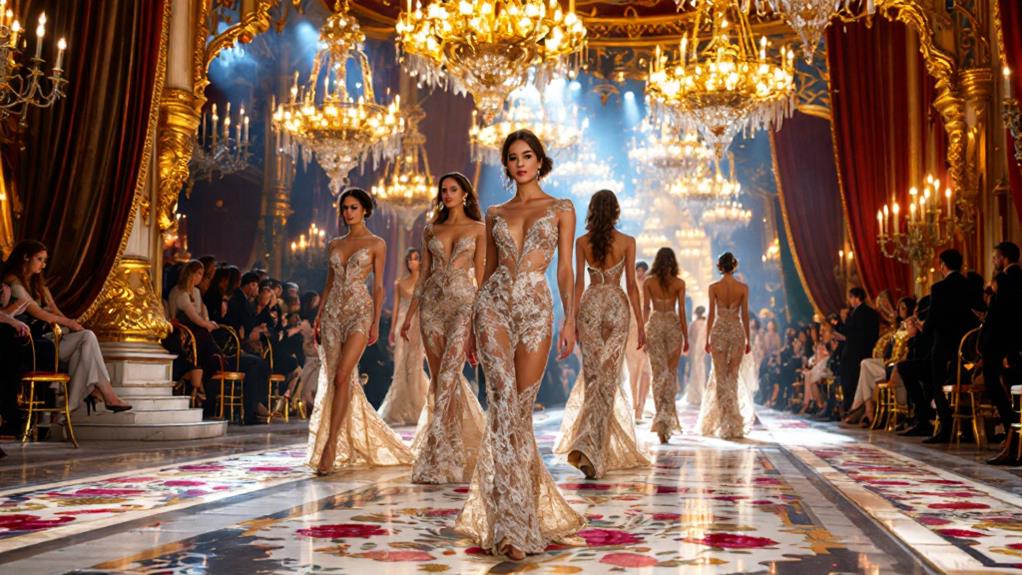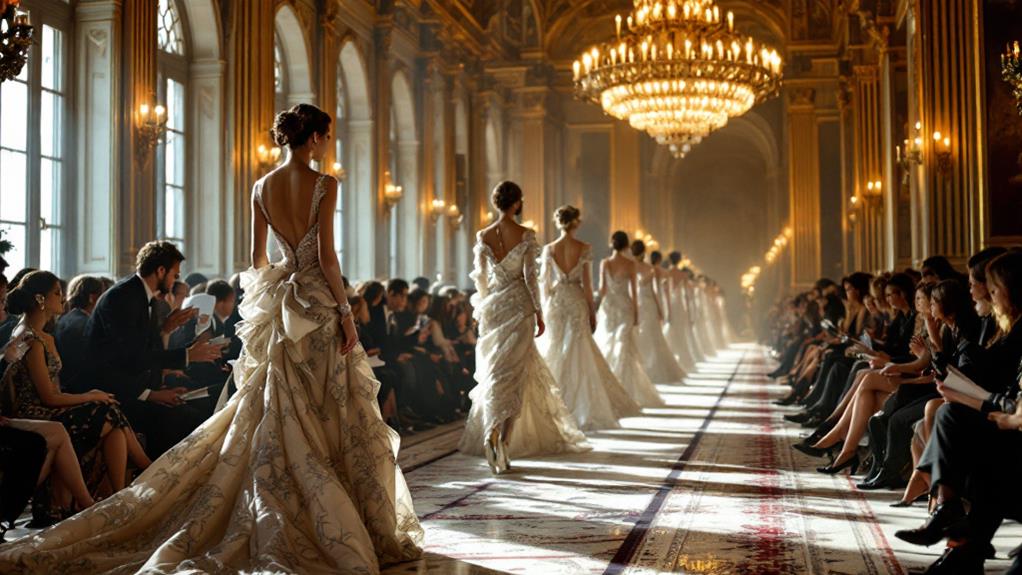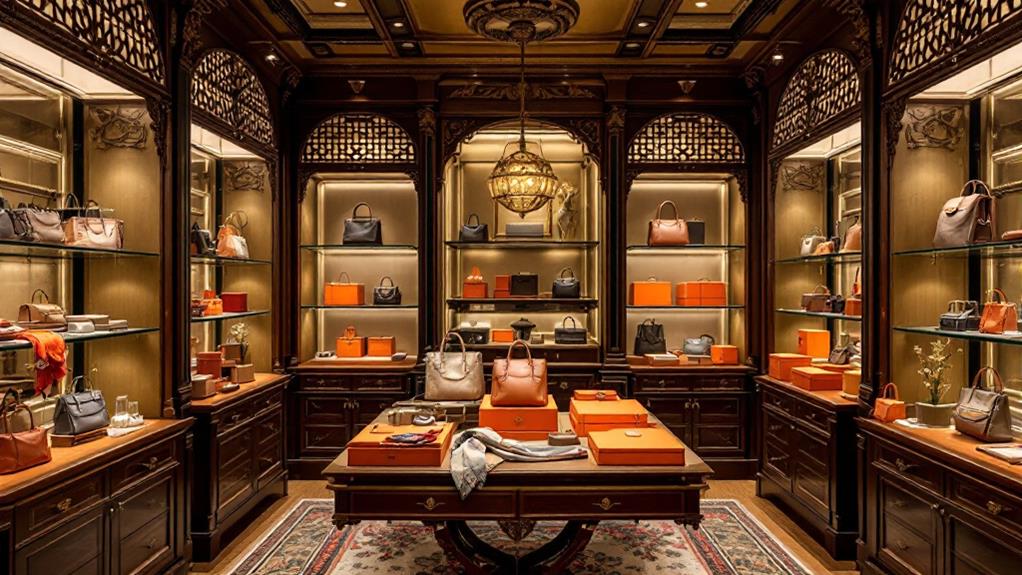The Iconic History of Louis Vuitton: A Luxury Fashion Brand
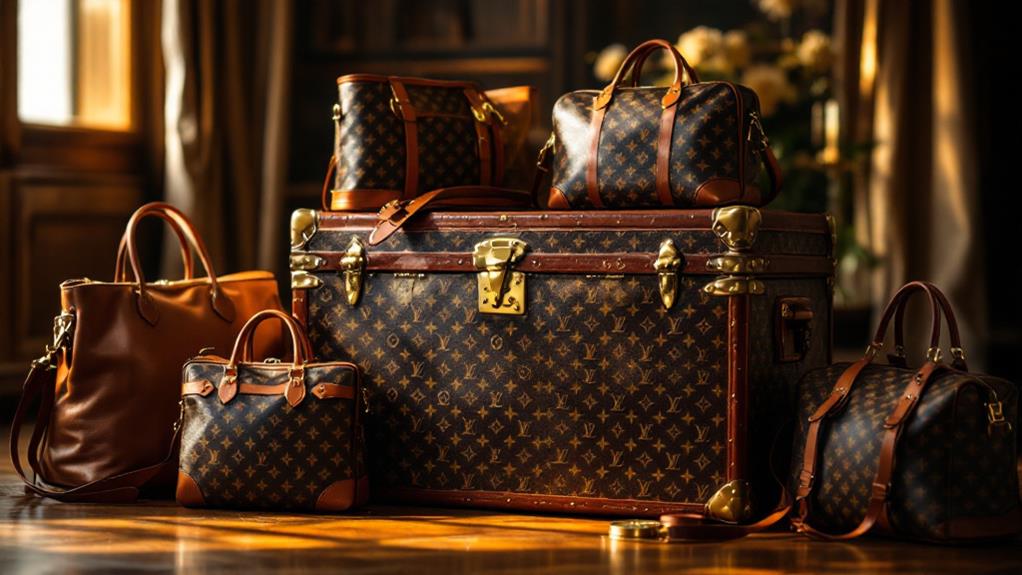
You're uncovering the iconic evolution of Louis Vuitton, a brand that started in 1854 with high-quality leather goods and groundbreaking travel trunks. Known for the LV Monogram introduced in 1896, it signified luxury and deterred counterfeiting. Over the years, Louis Vuitton's design transformed luggage with waterproof and stackable trunks, while collaborations with artists like Takashi Murakami kept the brand modern and influential. Global expansion and mergers solidified its status in the luxury market. Recent leadership and creative vision continue to enhance its cultural impact. There's so much more to reveal about this legendary fashion powerhouse.
Origins and Early Beginnings
How did a simple craftsman become a name synonymous with luxury? Louis Vuitton's expedition began in 1854, right in the heart of Paris. As a skilled artisan, Vuitton set his sights on creating high-quality leather goods and travel trunks. His dedication to craftsmanship quickly captured the attention of the affluent, including the French royal family. By focusing on the careful construction of his products, Vuitton laid the foundation for what would become a renowned luxury brand.
You might wonder how Vuitton's leather goods stood out in a lively city like Paris. It was all about the details. Each trunk was a proof of his commitment to durability and elegance, qualities that soon became hallmarks of the brand. Establishing his initial store at 4 Rue Neuve-des-Capucines, Vuitton's reputation flourished, aided by notable clients like Empress Eugénie de Montijo.
Fast forward to 1896, and the iconic LV Monogram was born. Georges Vuitton, Louis's son, introduced this distinctive pattern to combat counterfeiting and define the brand's identity. Today, the monogram is instantly recognizable, symbolizing the luxury and craftsmanship that began with Louis's vision.
Revolutionizing Luggage Design
Why did Louis Vuitton become a pioneer in luggage design? In 1858, Louis Vuitton transformed the industry by crafting the flat-topped trunk. Unlike its rounded predecessors, this design was stackable and waterproof, perfectly suited for the needs of travelers. As a trunk maker, Vuitton focused on practicality and innovation, ensuring travelers had reliable and stylish options for their travels.
The late 1800s saw further advancements with the introduction of the Trianon canvas. This lightweight and durable material provided an excellent alternative to leather, enhancing the practicality of travel goods. In 1886, Georges Vuitton took security to the next level by developing an unpickable tumbler lock, setting a new standard for travel trunk security.
The iconic LV Monogram Canvas, launched in 1896, was another breakthrough. This signature monogram didn't just combat counterfeiting; it also became synonymous with luxury and the brand's prestigious identity. Louis Vuitton handbags and travel pieces bearing this monogram quickly became status symbols worldwide.
The Monogram Legacy
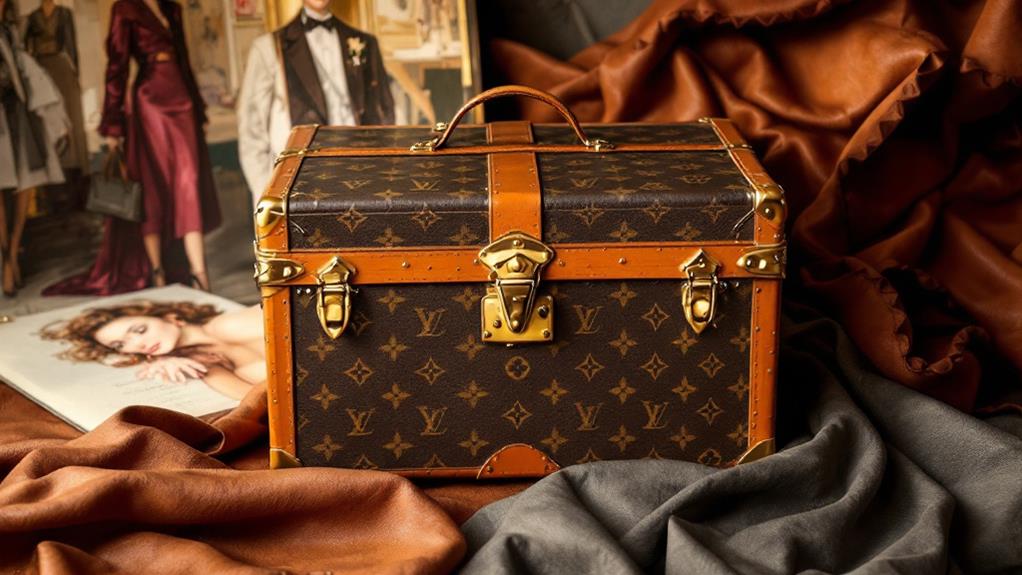
The iconic LV Monogram Canvas, introduced in 1896 by Georges Vuitton, marked a significant moment in luxury branding. Designed to combat counterfeiting and solidify brand identity, the monogram features intertwined initials and floral motifs. This design quickly became synonymous with luxury and status, symbolizing the heritage of Louis Vuitton. By 1905, it was trademarked, ensuring its unique identity within the world of luxury brands.
You'll find the Monogram Canvas's versatility fascinating, as it graces a wide range of products, from handbags and luggage to accessories. This adaptability has embedded it firmly in luxury culture, making it a staple across generations. In 1996, to celebrate the monogram's 100th anniversary, Louis Vuitton invited six renowned designers to create unique luggage pieces. These collaborations highlighted the brand's spirit of innovation and commitment to evolving while respecting its heritage.
Today, the LV Monogram remains a foundation of the brand's strategy. It continuously evolves through collaborations with contemporary artists and designers, maintaining its classic appeal while staying relevant. This enduring legacy not only reinforces Louis Vuitton's brand identity but also cements its place in the world of luxury brands.
Global Expansion and Influence
Building on the legacy of the Monogram Canvas, Louis Vuitton's influence extends far beyond its iconic designs. By opening its initial flagship store on the Champs-Élysées in 1914, Louis Vuitton established itself as a formidable force in the luxury retail market. This presence laid the groundwork for international expansion in the early 20th century. As you trace the brand's growth, you'll see boutiques popping up in major cities like London and New York, which contributed considerably to its global recognition.
To secure its status and combat counterfeiting, Louis Vuitton's introduction of the signature monogram canvas in 1896 became a worldwide symbol of luxury and sophistication. The brand's merger with Moët Hennessy in 1987, forming LVMH, amplified its influence and reach within the luxury sector, ensuring its position at the forefront of fashion.
Louis Vuitton's commitment to craftsmanship is evident in its nearly 20 workshops across France. These include the renowned Asnières workshop, dedicated to special orders, illustrating the brand's dedication to quality and innovation. Here's what makes Louis Vuitton's global expansion and influence distinct:
- International expansion in key cities
- Signature monogram as a luxury symbol
- Commitment to craftsmanship through workshops
Leadership and Creative Vision
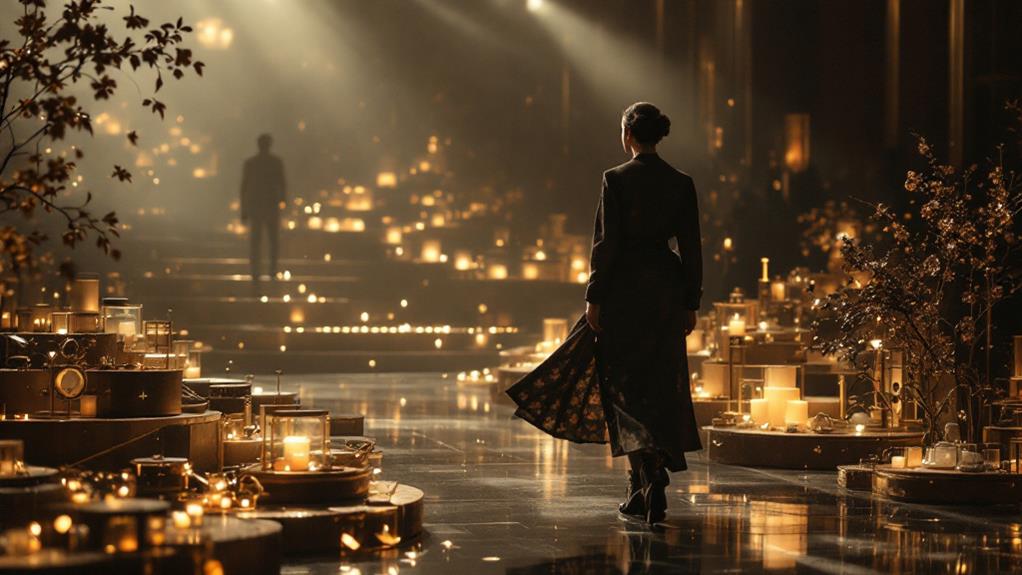
Throughout its storied history, Louis Vuitton has been shaped by visionary leaders who steered the brand toward new horizons. Marc Jacobs, appointed as creative director in 1997, was instrumental in redefining Louis Vuitton's image. He introduced the ready-to-wear line, marking the brand's crucial shift into high fashion. Jacobs' leadership laid the groundwork for future expansions in luxury fashion, blending traditional craftsmanship with modern trends.
Following Jacobs, Nicolas Ghesquiére took the reins of womenswear in 2013. Known for his groundbreaking designs, Ghesquiére redefined the brand's aesthetic through landmark fashion shows. His creative vision pushed the boundaries of luxury fashion, ensuring Louis Vuitton remained at the forefront of contemporary culture.
In 2018, Virgil Abloh made history as the initial person of African descent to become the menswear artistic director. Abloh infused the brand with a fresh, contemporary streetwear influence, broadening its appeal to a new generation.
Most recently, Pharrell Williams' appointment as menswear artistic director in 2023 heralds another exciting chapter. Williams brings a unique blend of creativity and cultural collaboration, ensuring Louis Vuitton's continued dominance in the luxury fashion landscape. These leaders have expanded the brand's offerings, solidifying its status as a cultural icon.
Iconic Collaborations
Embracing collaboration has been a key strategy for Louis Vuitton, allowing the brand to continually redefine luxury fashion. By partnering with renowned artists and designers, Louis Vuitton has infused its iconic monogram with fresh creativity. In 2003, the collaboration with Takashi Murakami brought a colorful twist to the brand. His playful designs integrated art into the world of luxury fashion, making the collection instantly popular.
Another significant partnership was with Stephen Sprouse in 2001, which introduced bold graffiti prints to the brand's offerings. This collaboration merged street art with luxury fashion, attracting a younger and more adventurous audience. Louis Vuitton's ability to blend high fashion with contemporary urban culture was further exemplified in 2017 through its collaboration with Supreme, a streetwear giant. This limited-edition line was highly sought after, showcasing the brand's adaptability and forward-thinking approach.
- Takashi Murakami (2003): Brought colorful, playful designs.
- Stephen Sprouse (2001): Introduced iconic graffiti prints.
- Supreme (2017): Blended luxury with contemporary urban culture.
These collaborations, alongside the introduction of ready-to-wear lines and jewelry through Marc Jacobs, have solidified Louis Vuitton's place at the forefront of luxury fashion innovation.
Mergers and Corporate Evolution
Occasionally, the evolution of a brand hinges on strategic decisions that reshape its future. In 1987, Louis Vuitton merged with Moët et Chandon and Hennessy, marking a significant move that transformed the luxury goods market. This merger formed LVMH, a powerhouse in the luxury industry valued at over $3 million, and signaled a new chapter for Louis Vuitton. Bernard Arnault, a crucial figure in this corporate evolution, orchestrated the merger alongside Alain Chevalier and Henry Racamier. Arnault's leadership was solidified after a boardroom conflict in 1989, when he became CEO and chairman, steering LVMH to become one of the leading luxury brands in the world.
With its integration into LVMH, Louis Vuitton experienced substantial growth across different sectors such as fashion, cosmetics, and fine wines. This strategic alliance allowed the fashion house to maintain its heritage while embracing modernity. Under LVMH's umbrella, Louis Vuitton not only expanded its product offerings but also engaged in collaborations with contemporary artists and designers, ensuring its relevance in the luxury market for nearly two centuries. Through these calculated moves, Louis Vuitton has remained at the forefront of luxury, continuing to captivate the world with its timeless allure.
Future Trends and Sustainability
As Louis Vuitton continues to lead in the luxury market, the brand's gaze shifts towards future trends and sustainability. You're witnessing a transformative expedition where Louis Vuitton aims for 100% eco-design across its product line by 2025. This ambitious goal underscores the brand's commitment to integrating sustainability into luxury fashion. By 2030, they're targeting a 55% reduction in greenhouse gas emissions, showcasing their dedication to environmental responsibility.
Louis Vuitton's introduction of Econyl, a sustainable nylon made from recycled materials, is a proof of its eco-friendly practices. This move not only reduces waste but also aligns with the brand's focus on eco-conscious materials in its collections. They're actively minimizing environmental impact through groundbreaking production and sourcing methods.
In the domain of digital innovation, Louis Vuitton is enhancing e-commerce growth while emphasizing circular fashion initiatives. These efforts promote recycling and sustainability, ensuring the luxury market can evolve responsibly. To visualize Louis Vuitton's approach:
- Eco-design: Achieving 100% across the product line by 2025.
- Greenhouse Gas Reduction: Aiming for a 55% decrease by 2030.
- Circular Fashion: Emphasizing recycling and sustainability in luxury.
With these steps, Louis Vuitton is paving the way for a more sustainable future.

